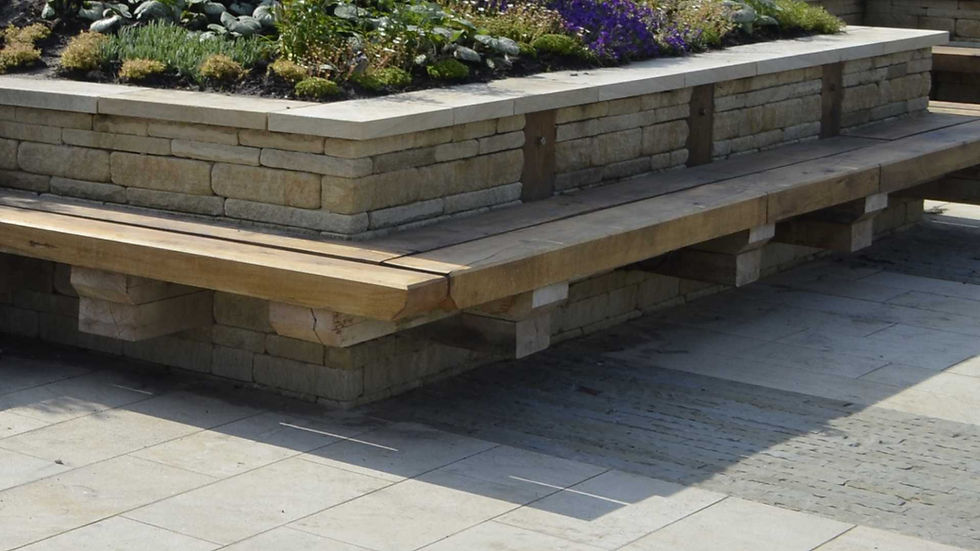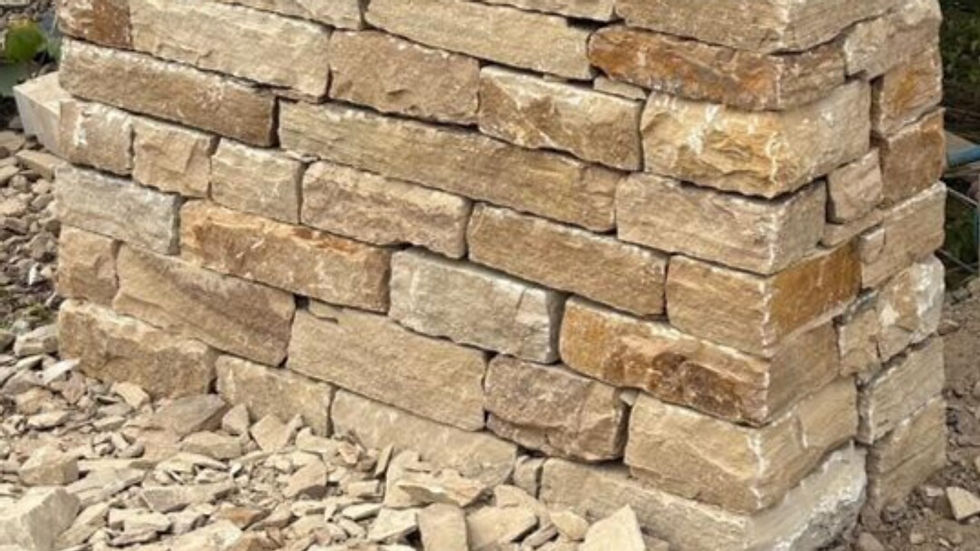Walling Stone: What You’re Really Paying For
- James Mcgregor
- Jul 7
- 3 min read
Updated: Jul 30
An Expert Guide to Walling Stone: From Quarry to Installation
When specifying walling stone, cost per tonne is often the first figure scrutinised. However, this alone rarely reflects the full picture. The real value of walling stone lies in its installed performance — how efficiently it lays, the labour involved, and how well it supports both design intent and construction demands.
This guide covers three of the most widely used and architecturally versatile formats of natural walling stone: random walling, coursed walling, and drystone walling. Each offers a different balance of aesthetic, installation efficiency, and structural compatibility.
Backed Off Random Walling Stone
A traditional look with modern performance.
Backed off random walling stone offers a natural-faced, rustic finish with a consistent bed depth — typically 100–125 mm — making it ideal for quick and efficient laying. Each piece is cropped from high-quality material and processed flat on the back for stability and speed on site.
This format is widely used in landscaping, garden walls, and estate builds where a weathered, natural aesthetic is important, but site productivity can’t be compromised. The result is a random walling product that balances authenticity with ease of use, reducing labour and on-site waste.

Coursed Walling Stone
Precision-processed for consistent lines and fast installation.
Coursed walling stone is cut to specific course heights, cropped to length, and processed for a clean, modular appearance. Its dimensional consistency allows for faster laying, tight joints, and uniform coursing — a preferred option for formal landscapes, contemporary schemes, and civic projects.
While the cost at source may be higher, coursed walling saves time and labour during installation. Its regular format ensures a professional, polished finish with minimal adjustment on site. builds.

Drystone Walling Stone
Craftsmanship begins at the quarry.
Drystone walling requires precision from the outset. High-quality drystone walling stone is selected by hand to ensure proper bed thickness, stable faces, and minimal need for trimming. Unlike "as-dug" alternatives, hand-selected stone builds faster and more securely, offering structural integrity without the need for mortar.
Drystone is commonly used in heritage environments, rural boundaries, and agricultural landscapes, where mortar-free construction is a practical and aesthetic necessity.

Tumbled Finishes (Where Appropriate)
Many walling stones benefit from additional finishing processes, such as tumbling, which softens edges and replicates the appearance of reclaimed stone. While this adds cost at the quarry, it enhances visual cohesion with existing structures, eases planning approval in conservation areas, and improves overall finish quality.
From Quarry to Wall: Why Installation Matters
The efficiency of installation is just as important as the quality of the stone itself. Different walling types bring different considerations:
Random walling stone allows flexibility in appearance and lays quickly due to consistent bed depths.
Coursed walling stone requires accuracy during processing but pays back in speed on site.
Drystone walling relies on expert selection to ensure minimal shaping and strong structural performance.
Choosing the right product — and understanding how it performs on site — is essential to maximising project value.
Sustainable Stone Sourcing
Responsible sourcing is at the heart of modern stone supply. Working with UK-based quarries and selective European partners allows for:
Reduced transportation emissions
Lower embodied carbon
Better alignment with local environmental conditions
Support for regional economies and traditional craft
Early engagement between suppliers, designers, and contractors also improves material yield, reducing unnecessary waste and ensuring every part of the quarried stone is used effectively.
Final Thought: Installed Value Over Price per Tonne
Comparing walling stone purely on price per tonne overlooks the broader value equation. Stone that’s hard to lay, inconsistent in format, or high in waste can significantly increase overall project costs — even if the initial price appears attractive.
Walling products that are well-processed, selected for consistency, and suited to the installation method ultimately offer far greater value. When the supply chain understands both the quarrying and installation ends of the process, outcomes improve across cost, speed, and quality.
Specifying Walling Stone? Think Beyond the Quarry
Whether it’s the rustic charm of random walling, the precision of coursed formats, or the heritage integrity of drystone construction, choosing the right product early — and understanding its installation performance — is key to long-term success.
Working with suppliers who bridge the gap between quarry and site ensures better coordination, less waste, and more control from concept to completion.


